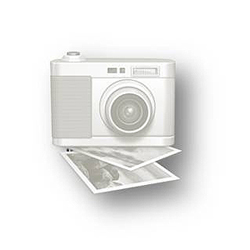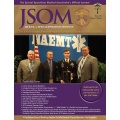Extraglottic Airways in Tactical Combat Casualty Care: TCCC Guidelines Change 17-01 28 August 2017
Otten EJ, Montgomery HR, Butler FK 17(4). 19 - 28 (Journal Article)
Extraglottic airway (EGA) devices have been used by both physicians and prehospital providers for several decades. The original TCCC Guidelines published in 1996 included a recommendation to use the laryngeal mask airway (LMA) as an option to assist in securing the airway in Tactical Evacuation (TACEVAC) phase of care. Since then, a variety of EGAs have been used in both combat casualty care and civilian trauma care. In 2012, the Committee on TCCC (CoTCCC) and the Defense Health Board (DHB) reaffirmed support for the use of supraglottic airway (SGA) devices in the TACEVAC phase of TCCC, but did not recommend a specific SGA based on the evidence available at that point in time. This paper will use the more inclusive term "extraglottic airway" instead of the term "supragottic airway" used in the DHB memo. Current evidence suggests that the i-gel® (Intersurgical Complete Respiratory Systems; http://www.intersurgical.com/info/igel) EGA performs as well or better than the other EGAs available and has other advantages in ease of training, size and weight, cost, safety, and simplicity of use. The gel-filled cuff in the i-gel both eliminates the need for cuff pressure monitoring during flight and reduces the risk of pressure-induced neuropraxia to cranial nerves in the oropharynx and hypopharynx as a complication of EGA use. The i-gel thus makes the medic's tasks simpler and frees him or her from the requirement to carry a cuff manometer as part of the medical kit. This latest change to the TCCC Guidelines as described below does the following things: (1) adds extraglottic airways (EGAs) as an option for airway management in Tactical Field Care; (2) recommends the i-gel as the preferred EGA in TCCC because its gel-filled cuff makes it simpler to use than EGAs with air-filled cuffs and also eliminates the need for monitoring of cuff pressure; (3) notes that should an EGA with an air-filled cuff be used, the pressure in the cuff must be monitored, especially during and after changes in altitude during casualty transport; (4) emphasizes COL Bob Mabry's often-made point that extraglottic airways will not be tolerated by a casualty unless he or she is deeply unconscious and notes that an NPA is a better option if there is doubt about whether or not the casualty will tolerate an EGA; (5) adds the use of suction as an adjunct to airway management when available and appropriate (i.e., when needed to remove blood and vomitus); (6) clarifies the wording regarding cervical spine stabilization to emphasize that it is not needed for casualties who have sustained only penetrating trauma (without blunt force trauma); (7) reinforces that surgical cricothyroidotomies should not be performed simply because a casualty is unconscious; (8) provides a reminder that, for casualties with facial trauma or facial burns with suspected inhalation injury, neither NPAs nor EGAs may be adequate for airway management, and a surgical cricothyroidotomy may be required; (9) adds that pulse oximetry monitoring is a useful adjunct to assess airway patency and that capnography should also be used in the TACEVAC phase of care; and (10) reinforces that a casualty's airway status may change over time and that he or she should be frequently reassessed.


 Español
Español 




